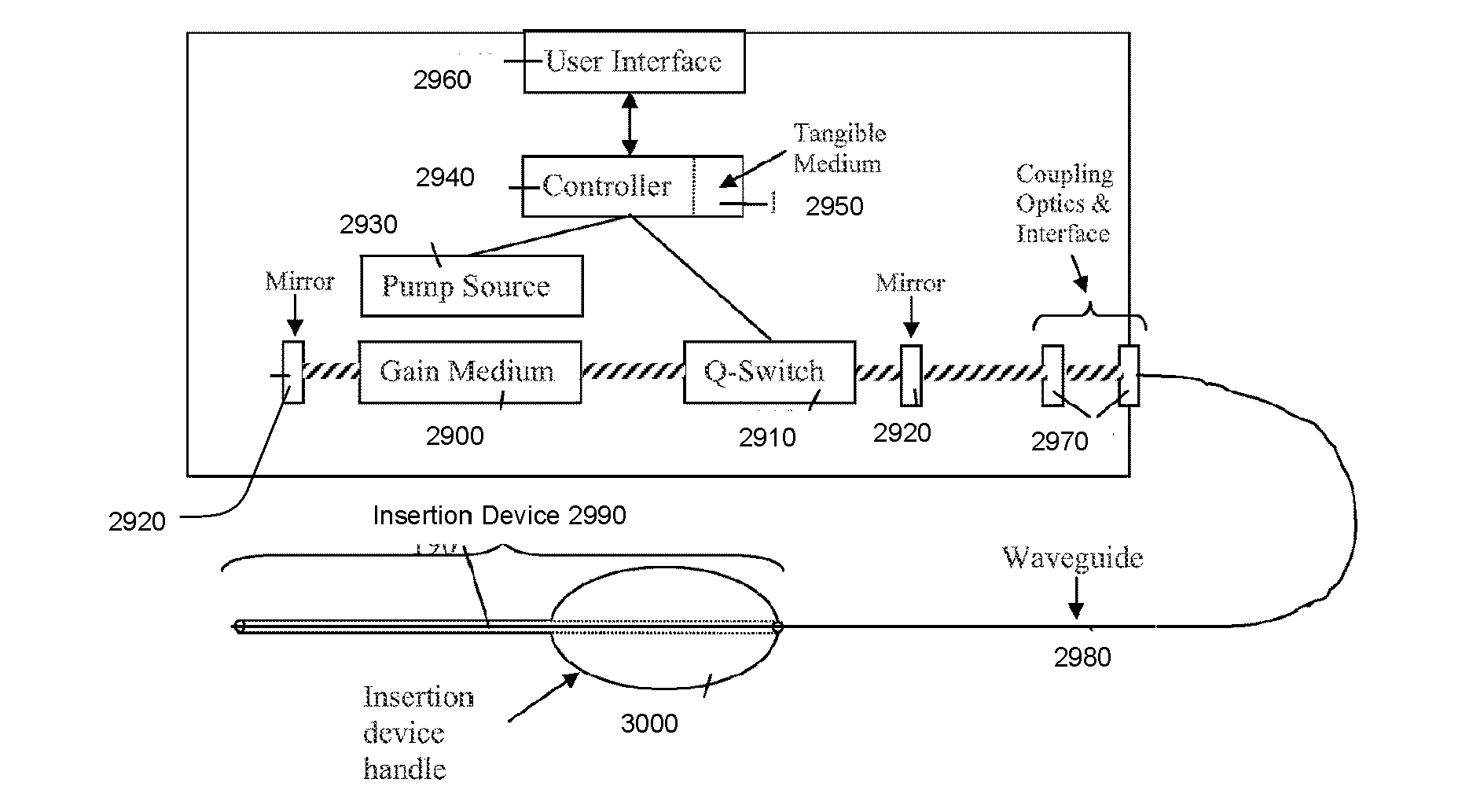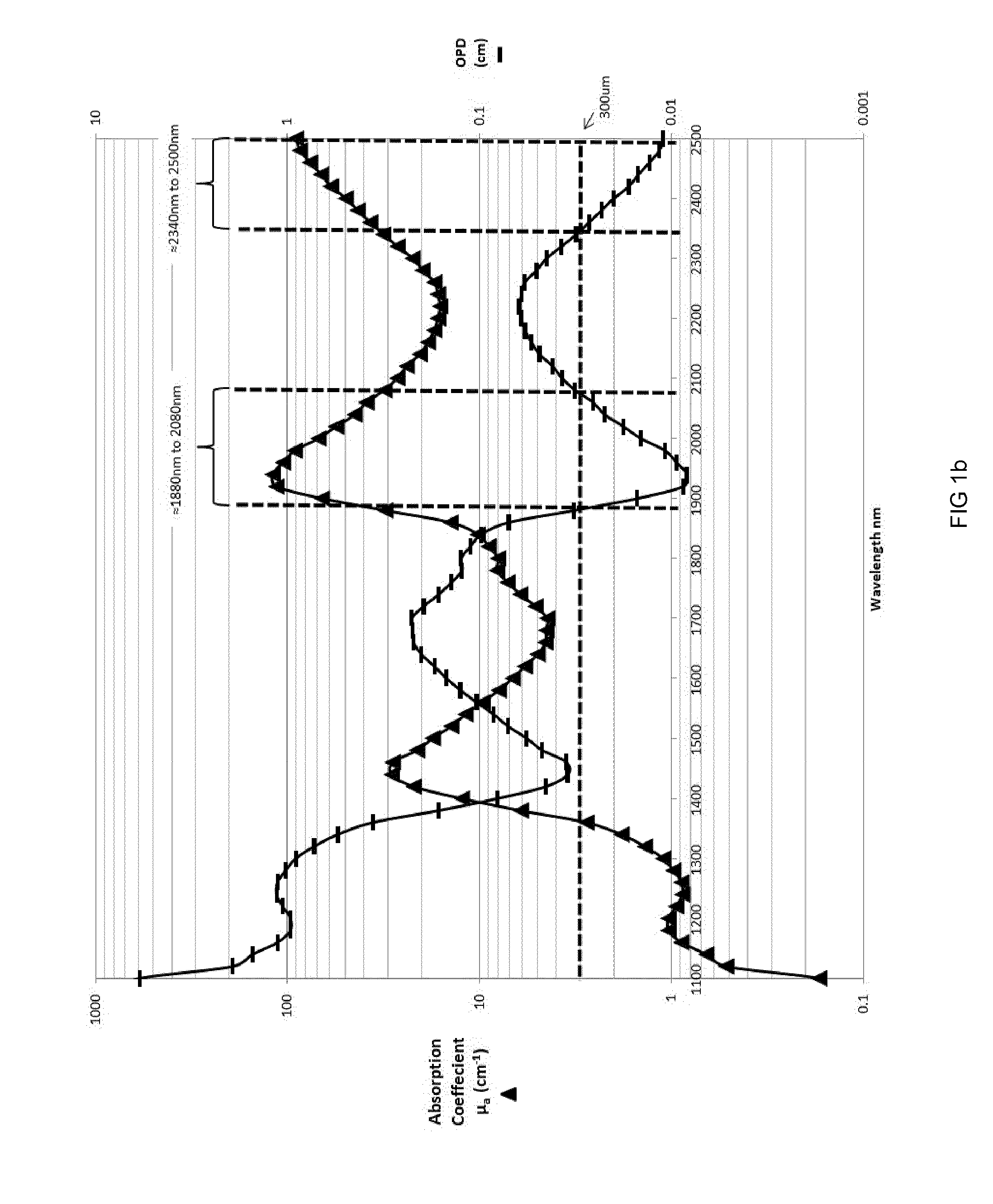Flash vaporization surgical systems
a surgical system and flash vaporization technology, applied in the field of flash vaporization surgical systems, can solve the problems of inability to remove tissue, inducing mechanical trauma to the tissue, and disadvantages of devices, and achieve the effect of quick and efficient tissue removal and resecting
- Summary
- Abstract
- Description
- Claims
- Application Information
AI Technical Summary
Benefits of technology
Problems solved by technology
Method used
Image
Examples
examples
[0421]A sinus surgeon performing an ethmoidectomy can remove the center portion of the thin bony honeycomb like structure and the surrounding mucosa of the ethmoid sinus cavity to improve mucus drainage. The surgeon may enter the ethmoid through a mucosa covered bony structure with minimal bleeding using a periodic pulse scheme such as shown in FIG. 32d. The FIG. 32d pulse scheme periodically blends ablative pulses for bone removal with some light heating pulses to control bleeding from small capillaries. Once inside the ethmoid sinus the surgeon may encounter more bony structures with very thin mucosa where the surgeon may not be concerned about bleeding issues. In this case the surgeon can switch setting to a pulse structure such as FIG. 32c where a cold ablation, including flash vaporization, of bone is performed with almost no coagulative heating. If at some point during the procedure an artery is perforated a setting such as FIG. 32f can be used to heat the localized area to co...
PUM
 Login to View More
Login to View More Abstract
Description
Claims
Application Information
 Login to View More
Login to View More - R&D
- Intellectual Property
- Life Sciences
- Materials
- Tech Scout
- Unparalleled Data Quality
- Higher Quality Content
- 60% Fewer Hallucinations
Browse by: Latest US Patents, China's latest patents, Technical Efficacy Thesaurus, Application Domain, Technology Topic, Popular Technical Reports.
© 2025 PatSnap. All rights reserved.Legal|Privacy policy|Modern Slavery Act Transparency Statement|Sitemap|About US| Contact US: help@patsnap.com



